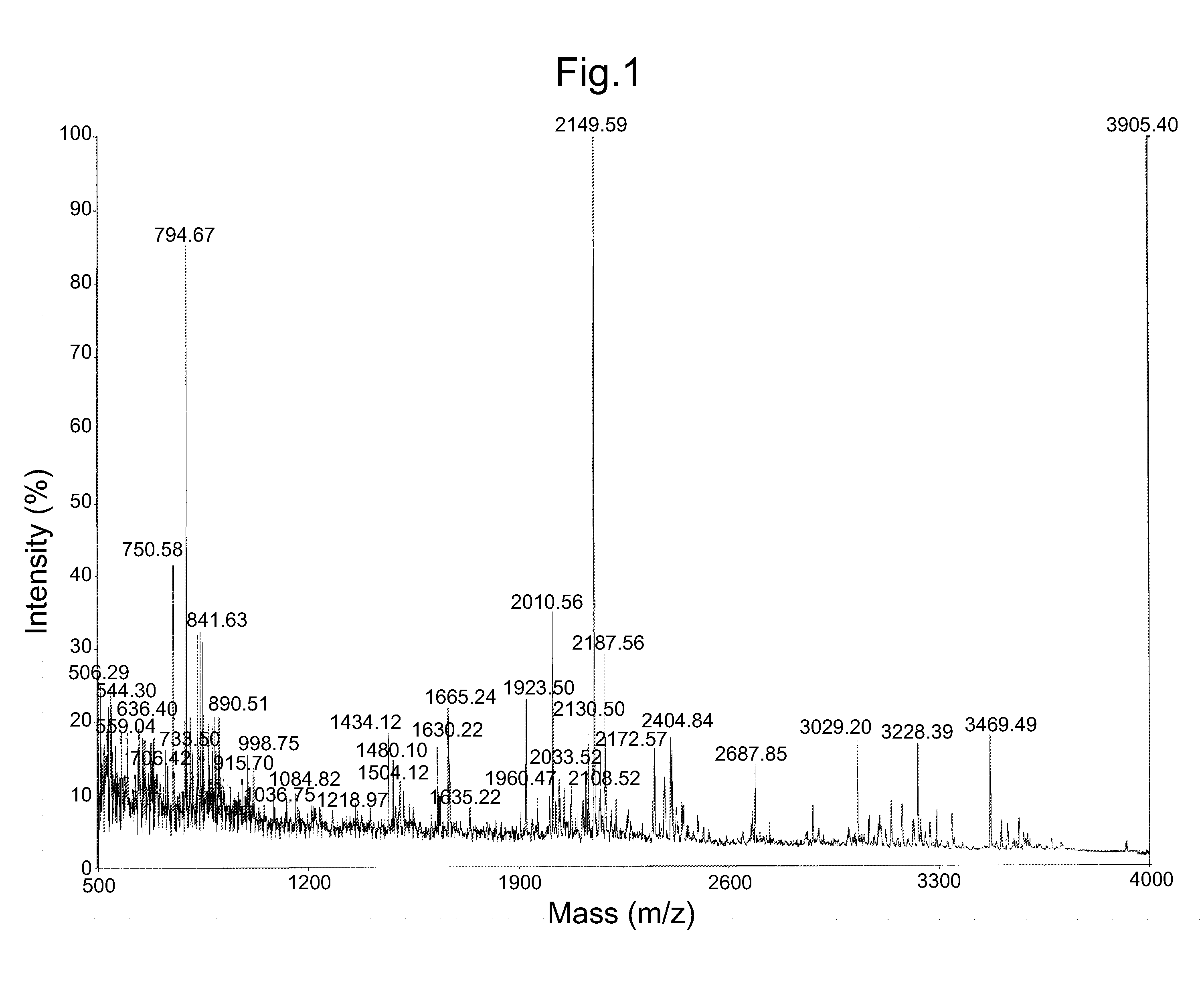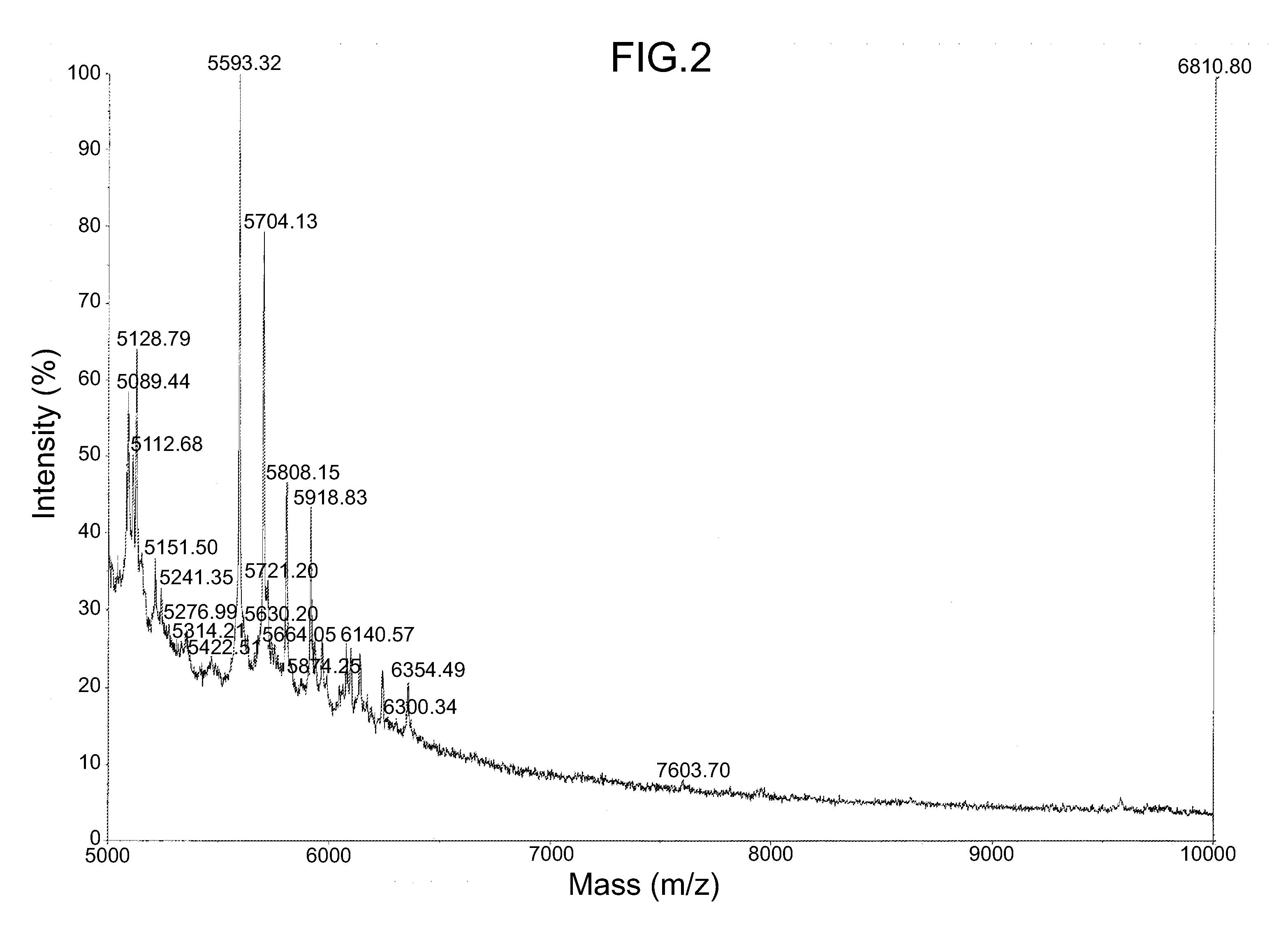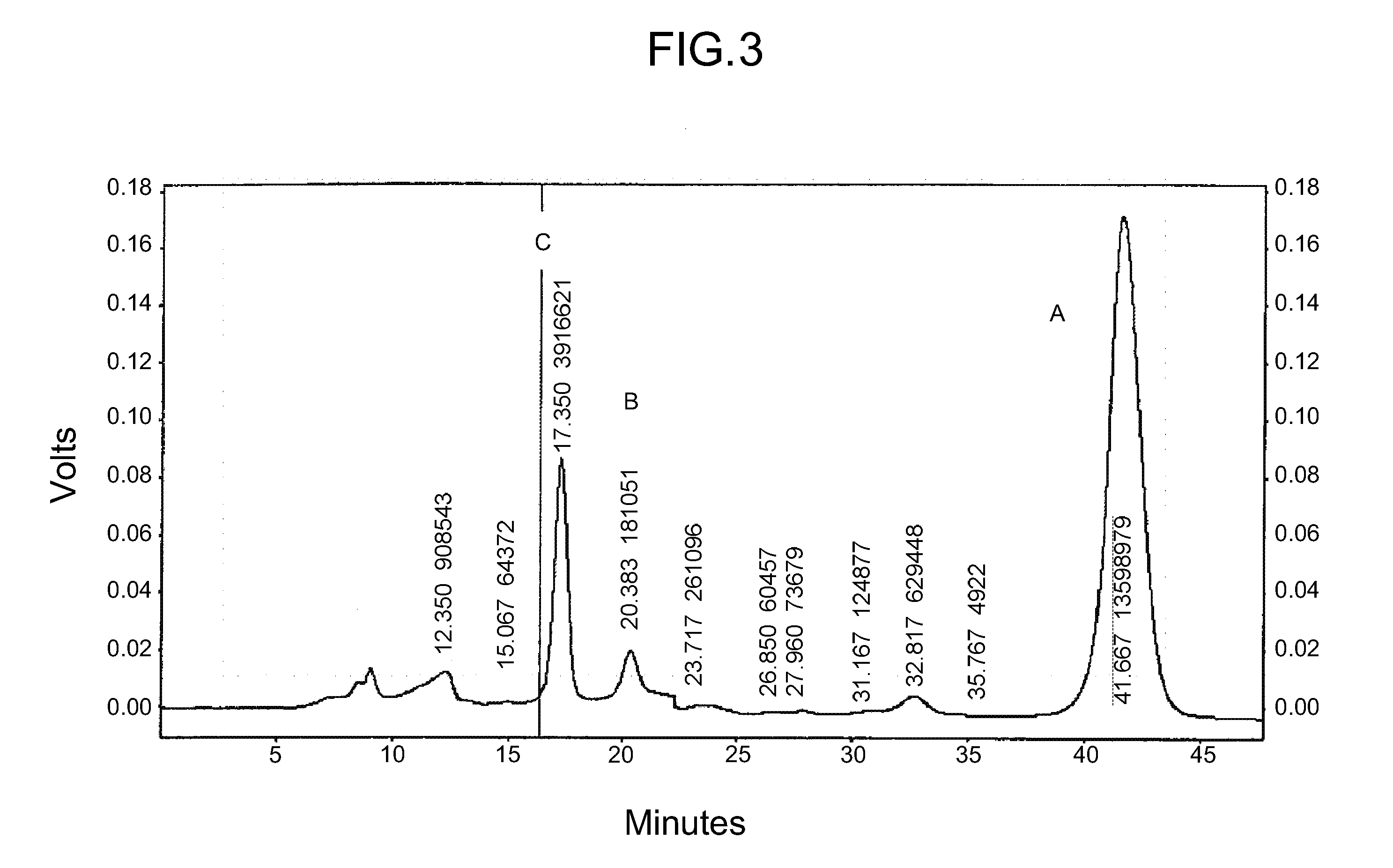Extract of Lentinus for Its Action on Cellulite and Accumulations of Fat
- Summary
- Abstract
- Description
- Claims
- Application Information
AI Technical Summary
Problems solved by technology
Method used
Image
Examples
example 1
Total Aqueous Extracts and Alcoholic Precipitate
[0059]1 kilogram of dried Lentinus edodes is ground in an Henri knife mill. The powder obtained is extracted with 3×10 litres of boiling distilled water. After stirring for 30 minutes at 90° C., it is filtered on a 50-litre Büchner filter on a layer of filter aid (Celite). It is concentrated to 5 litres in a Luwa thin-film evaporator, and is then lyophilized in a Serail lyophilizer. An aliquot from each aqueous extract is dissolved in distilled water and precipitated by adding 1.5 volume of 96° ethanol. It is left overnight in a coldroom and then centrifuged (IEC Centra 7R). It is dried in a desiccator under vacuum.
example 2
Analysis of the Extract according to the Invention by Mass Spectrometry
[0060]The extract from Example 1 was analysed by mass spectrometry (MALDI-ToF). MALDI (Matrix Assisted Laser Desorption Ionization) is a method of ionization that makes it possible to analyse molecules whose molecular weight is greater than 1000 Da. The analyser coupled to the MALDI source is a time-of-flight (ToF) analyser, which is very suitable for pulsed ionization by laser desorption. Separation in a time-of-flight analyser is based on the fact that ions of different mass, accelerated to a uniform kinetic energy, have different velocities, and therefore a different time-of-flight for covering a given distance.
[0061]FIGS. 1 and 2 show a visualization of all of the compounds whose molecular weight is between 500 and 10 000 m / z.
example 3
Characterization of the Extract from Example 1 by Chromatography
[0062]The raw extract from Example 1 was analysed by ion-exchange liquid chromatography on a CARBO-Sep column (CHO-682, Interchim), the unique selectivity of which makes it possible to separate mono- and disaccharides using only pure water as eluent. The chromatogram obtained (FIG. 3) shows the presence mainly of a small hydroxylated molecule (A) and, among others, two compounds which may correspond to a monosaccharide (B) and a disaccharide (C).
[0063]Secondly, the raw extract was analysed by size exclusion chromatography on the Shodex OHpak B-804 column (limit of exclusion: 4×105 kDalton). The chromatographic profile obtained shows that only 2% of the extract corresponds to polysaccharides (FIG. 4).
PUM
| Property | Measurement | Unit |
|---|---|---|
| Fraction | aaaaa | aaaaa |
| Fraction | aaaaa | aaaaa |
| Fraction | aaaaa | aaaaa |
Abstract
Description
Claims
Application Information
 Login to View More
Login to View More - R&D
- Intellectual Property
- Life Sciences
- Materials
- Tech Scout
- Unparalleled Data Quality
- Higher Quality Content
- 60% Fewer Hallucinations
Browse by: Latest US Patents, China's latest patents, Technical Efficacy Thesaurus, Application Domain, Technology Topic, Popular Technical Reports.
© 2025 PatSnap. All rights reserved.Legal|Privacy policy|Modern Slavery Act Transparency Statement|Sitemap|About US| Contact US: help@patsnap.com



